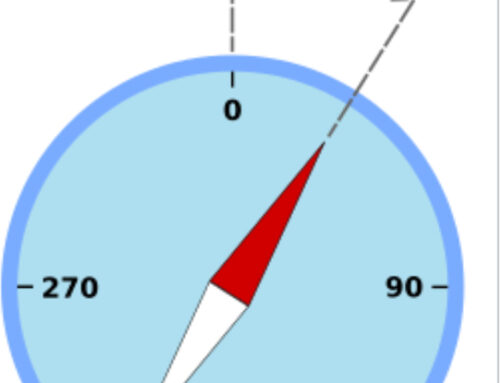How Accurate Is a Magnet Pull Force Calculator?
Magnet strength can be surprising. But how do we measure it without expensive lab tools?
A magnet pull force calculator gives a fast, theoretical estimate of how much weight a magnet can hold under ideal conditions.

magnetic pull force
If you’ve ever needed to know how strong a magnet really is before buying or testing it, a pull force calculator is a great tool. But it’s important to understand what it can—and can’t—tell you.
What does the magnet calculator do?
Sometimes people think magnet calculators work like magic. But in fact, they rely on science and assumptions.
The calculator estimates how much force it takes to pull a magnet directly away from a thick, flat steel surface, under ideal conditions.
How the calculator works
The pull force is calculated using formulas based on the magnet’s size, shape, material grade, and the steel it touches.
Here’s how it works:
- Flat surface only: The steel must be large, thick, and smooth.
- Direct contact: No gap between the magnet and the steel unless specified.
- Straight pull: The magnet is pulled directly away, not at an angle.
These assumptions make it easier to compare magnet types, but they don’t reflect every real-world setup.
Common input assumptions
| Parameter | Meaning | Why It Matters |
|---|---|---|
| Magnet shape | Block, cylinder, ring, etc. | Shape affects contact area and force |
| Magnet grade | N35, N42, N52, etc. | Higher grades are stronger |
| Dimensions | Diameter, height, length, width | Larger magnets usually pull harder |
| Air gap | Distance between magnet and steel | Even 0.1mm reduces force dramatically |
You can change these to explore how performance changes in theory.
What assumptions affect accuracy?
It’s easy to trust a number on the screen. But magnet pull calculators are not perfect.
The results assume ideal lab conditions. In the real world, surface roughness, coating, temperature, or pull angle can reduce the actual force.
When the numbers are misleading
Let’s break down what often causes errors:
1. Surface imperfections
Even small scratches or a bit of rust can reduce holding power by 10%–30%. The magnet must sit flush against the surface to get the maximum force.
2. Pull direction
If you pull at an angle instead of straight out, the force needed will drop. In many real uses, we slide magnets instead of pulling them straight off.
3. Coatings and air gaps
Magnets are often coated with nickel or epoxy, which adds tiny thickness and lowers the pull. An air gap of just 0.5 mm might cut the strength in half.
4. Steel type and thickness
Not all steel is the same. Soft, low-carbon steel works best. If the steel is too thin, it will saturate and won’t let the magnet pull at full strength.
| Real-World Factor | Effect on Pull Force |
|---|---|
| Rust or paint on steel | -20% to -40% |
| Angled pulling | -30% to -60% |
| 0.5mm air gap | -50% or more |
| Thin steel (<1mm) | Limited saturation, lower pull |
What input parameters can I adjust?
Every magnet application is different. That’s why the calculator lets you pick from many options.
You can choose the shape, grade, dimensions, and optional air gap to see how it changes the pull force.
Input options explained
Magnet Shape
Cylinders, discs, blocks, and rings behave differently because of their contact area. A large flat surface area helps the magnet grip better.
Magnet Grade
Higher-grade magnets like N52 are stronger than N35 or N42. But they are also more expensive and brittle.
Air Gap
This simulates coatings, paint, or slight misalignment. Even a small gap makes a big difference. Always test with a realistic air gap if you’re planning for real-world use.
| Shape | Typical Use | Strength Impact |
|---|---|---|
| Block | Fixtures, mounts | High contact area |
| Disc | DIY, crafts | Good all-rounder |
| Ring | Sensors, rotational tools | Specialized use |
| Cylinder | Push/pull applications | High pull force |
What does the result really mean?
Many users treat the calculator’s number as the magnet’s real-life limit. But that’s only part of the story.
The calculator shows the theoretical maximum holding force—usually much higher than what you’ll see in practice.

Magnet Pull Force Calculator
Why the real pull might be lower
The actual usable holding power depends on how the magnet is mounted, what it’s holding onto, and how much shear force is involved.
For example, a 20 lb pull force might only hold 5–10 lbs in a sideways sliding situation.
Also, shock or vibration can shake magnets loose, even if the calculator says the force is strong.
Here’s a rough guide:
| Estimated Pull | Practical Use Holding Weight |
|---|---|
| 5 lb | 1–2 lb |
| 20 lb | 5–10 lb |
| 50 lb | 15–25 lb |
How does the calculator work?
People often ask if the calculator uses real data. It doesn’t use physical test results—it uses math.
It applies standard magnetic force equations to estimate pull force based on input values.

Magnetic force equations
How pull force is calculated
The force between a magnet and steel plate can be estimated using the formula:
F = (B² × A) / (2 × μ₀)
Where:
- F = Pull force
- B = Magnetic flux density
- A = Area of contact
- μ₀ = Permeability of free space
This formula assumes:
- Uniform field
- Perfect contact
- No air gaps
- Full steel saturation
In other words, it’s a best-case scenario, not a guarantee.
Where can I learn more?
You don’t need to be a physicist to understand magnet strength. But if you want to dig deeper, many helpful resources exist.
The calculator page links to FAQs, technical guides, and product suggestions tailored to different magnet shapes and grades.
Helpful links from K&J Magnetics
I always recommend testing magnets under your specific conditions. Use the calculator for planning, but verify results with a real-world setup.
Conclusion
Magnet calculators are great tools for estimates, but testing is the only way to know for sure.





Leave A Comment